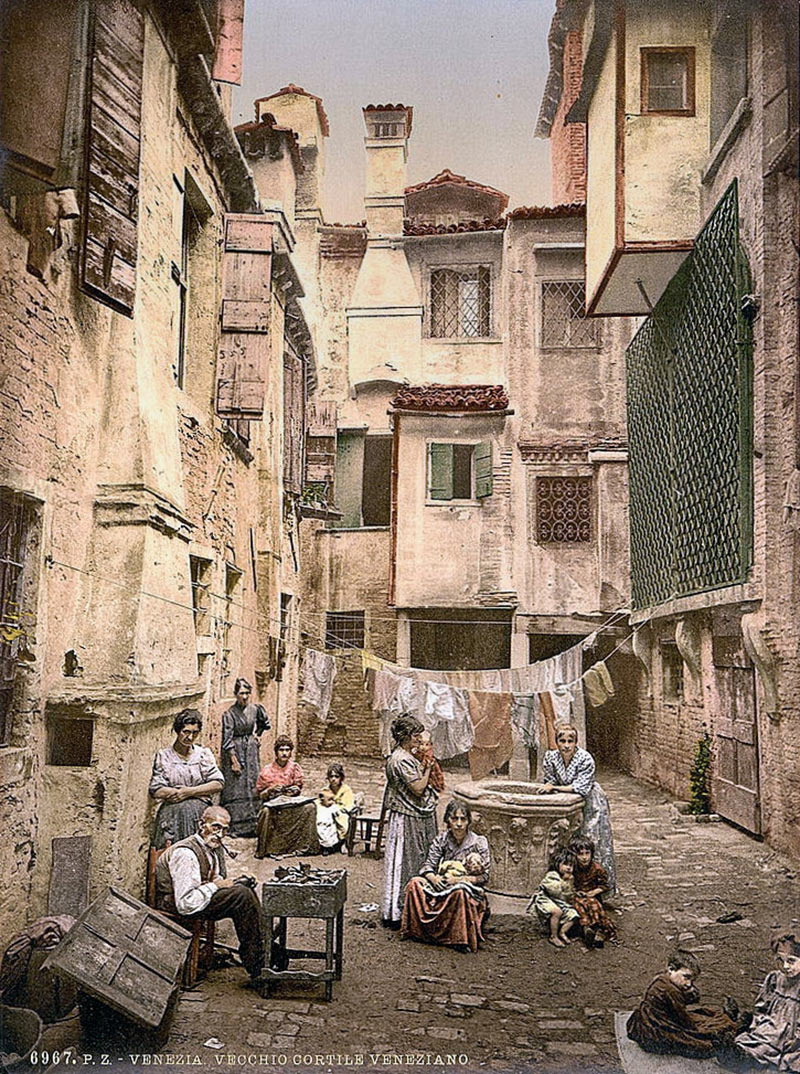The Belle Époque Venice cards were printed by a publishing company in Detroit using the Photochrom process. The laborious technology needed a lot of time, but it allowed to colorize black and white photographs as early as the 19th century.
This version of chromolithography was invented in the 1880s by Hans Jakob Schmidt, an employee of the Swiss printing company Orell Gessner Füssli. The process involved creating a lithographic stone from the negative of a photograph. A separate printing plate was made for each color. More than a dozen printing stones could be used to make a single postcard, an finally a surprisingly realistic color images were obtained.
Grand Canal in the moonlight

A view from the bell tower

Doge’s Palace

Inside San Marco cathedral

Gondolas and Piazzetta San Marco

Procession in front of San Marco cathedral

A concert on San Marco square

Piazzetta
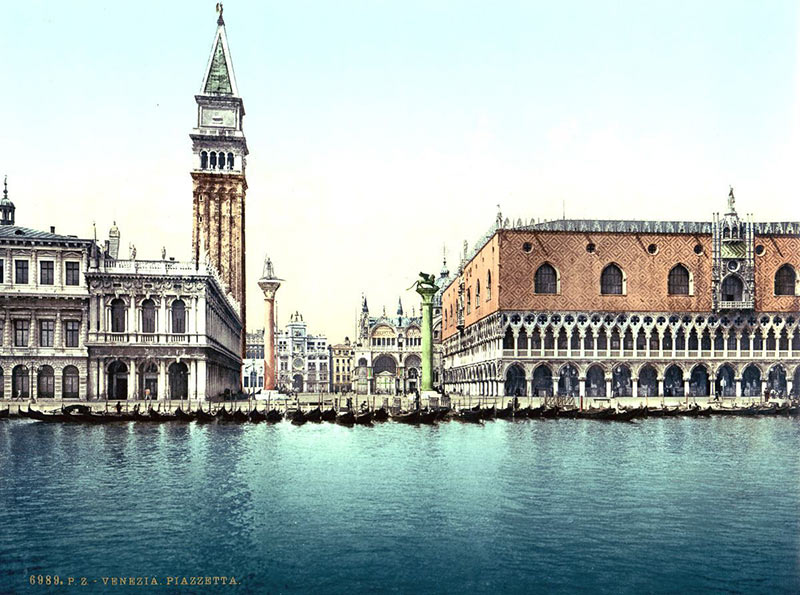
Secco Marina in San Guiseppe
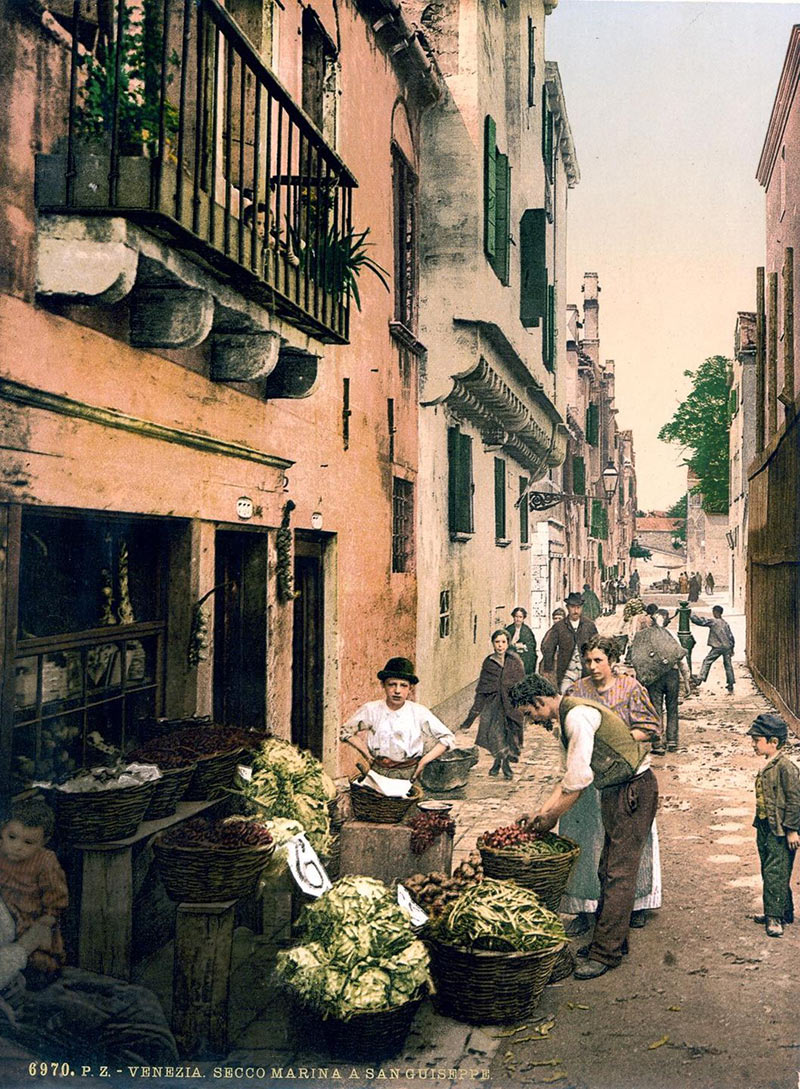
Doge’s Palace and Piazzetta

San Giorgio Maggiore Island

Three bridges
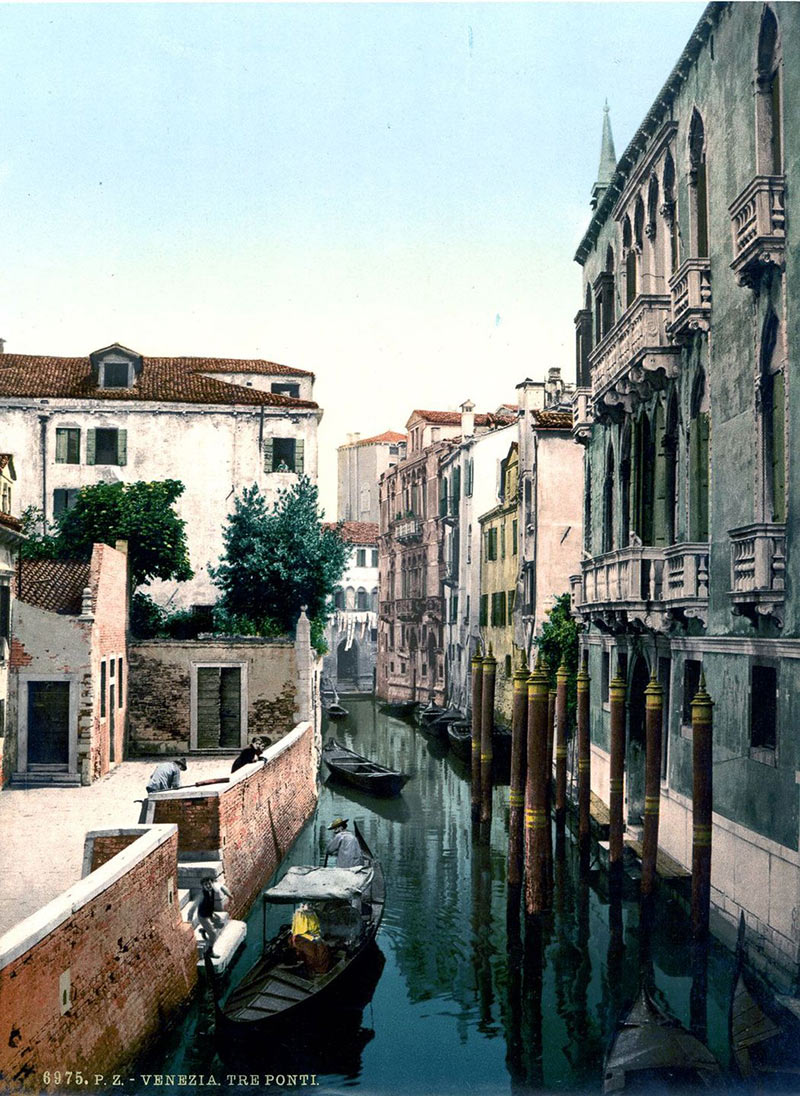
Procession across Grand Canal

Palazzo Pesaro on Grand Canal
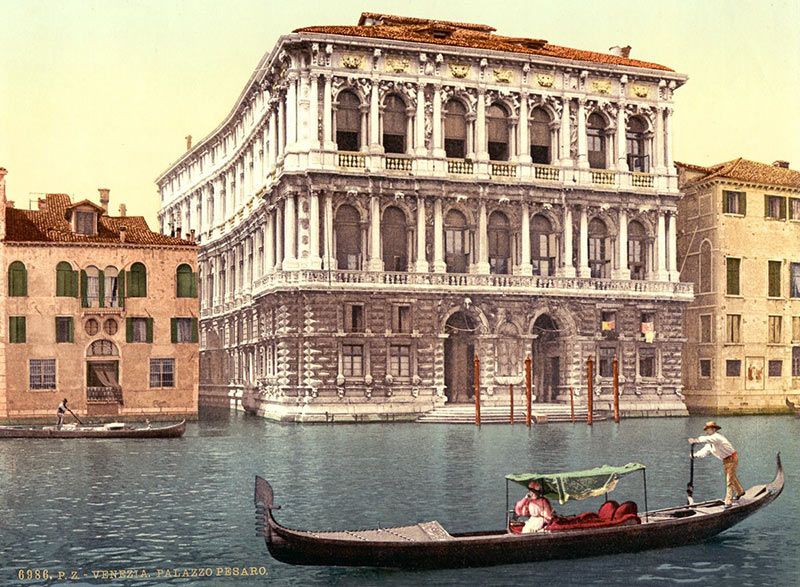
Grand Canal

Grand Canal and Rialto bridge
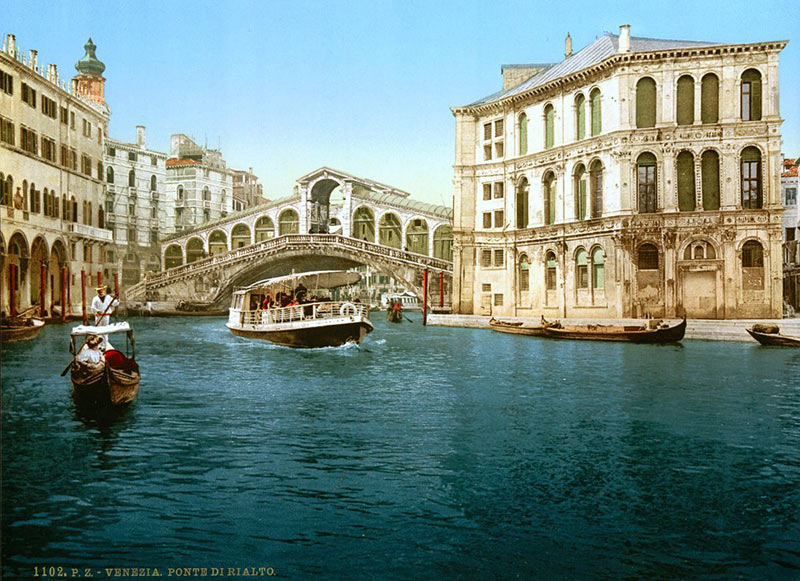
Bridge of Paradise
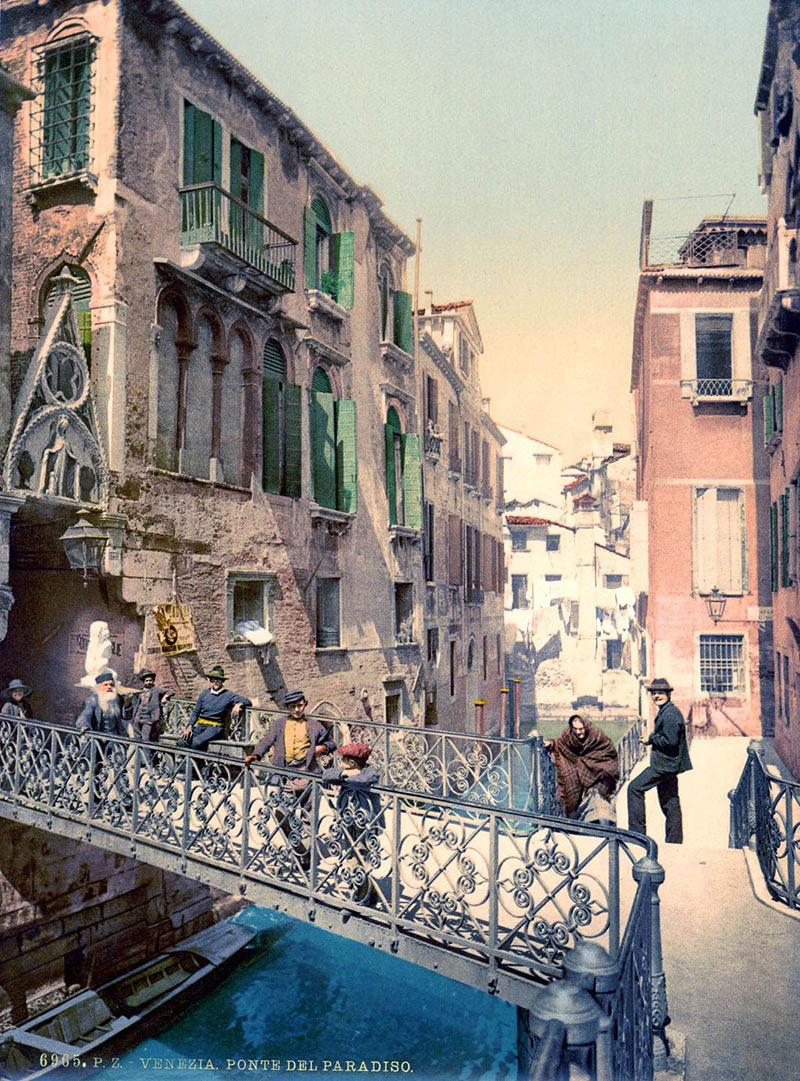
Rialto bridge
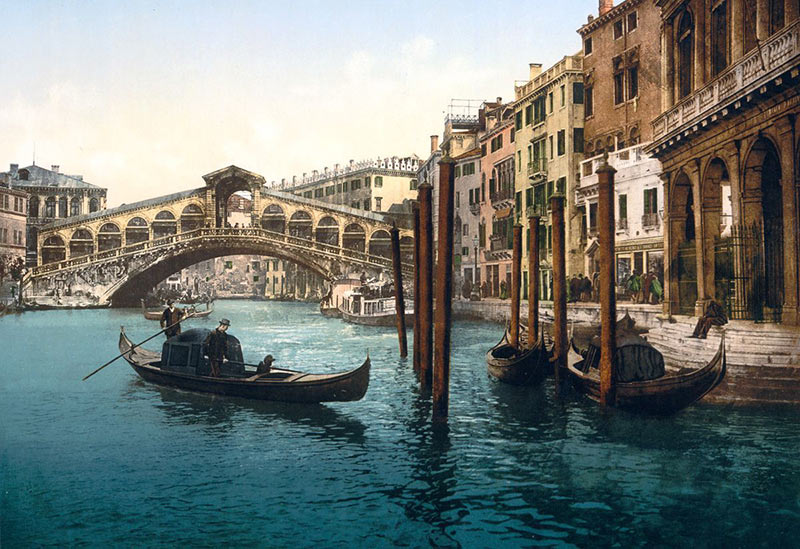
San Marco square and campanile
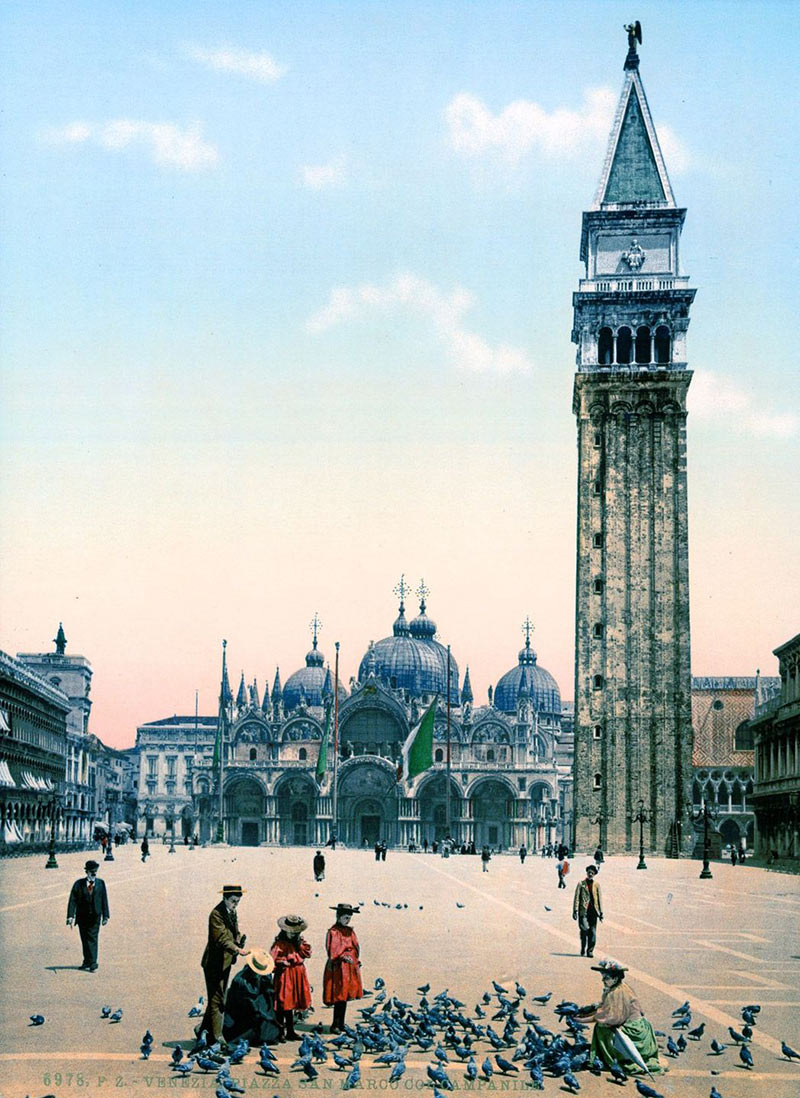
The Golden house
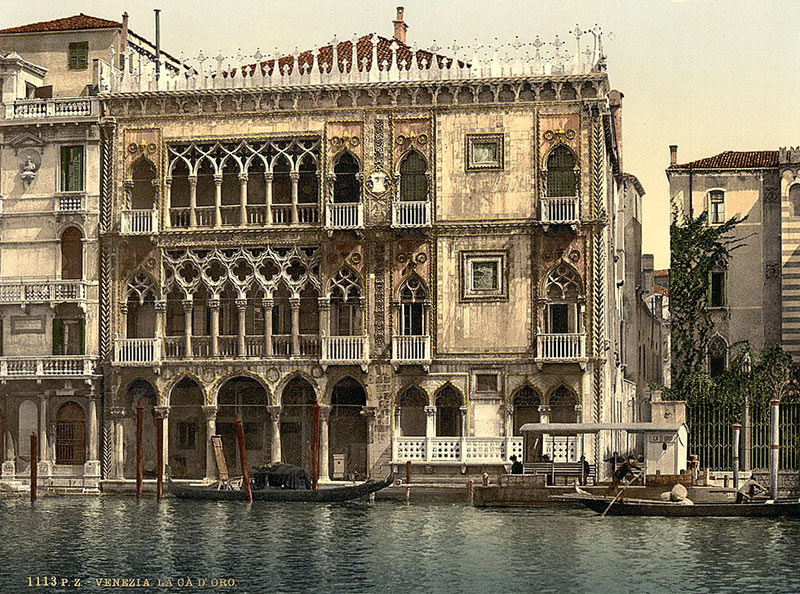
Old courtyard in Venice
